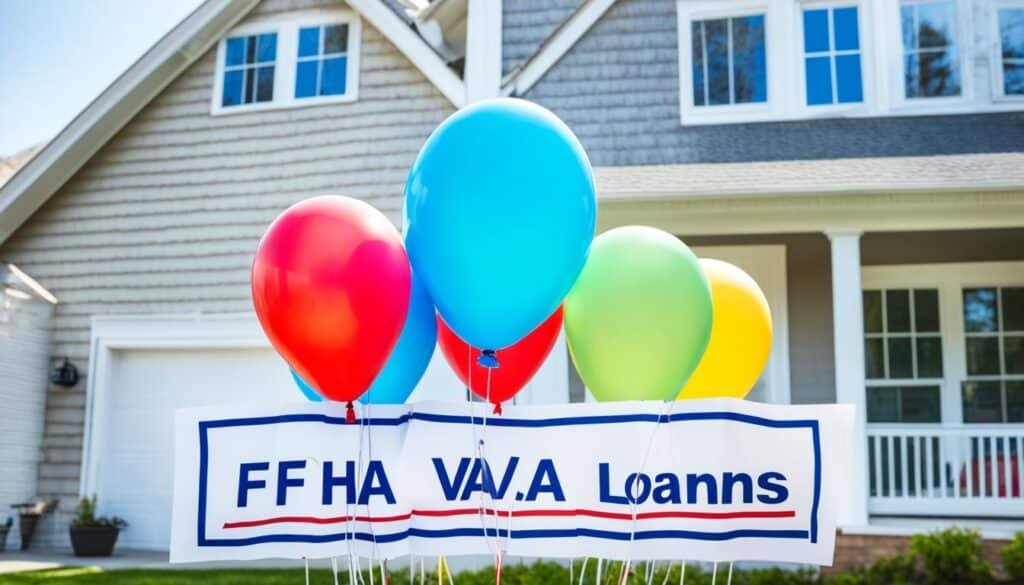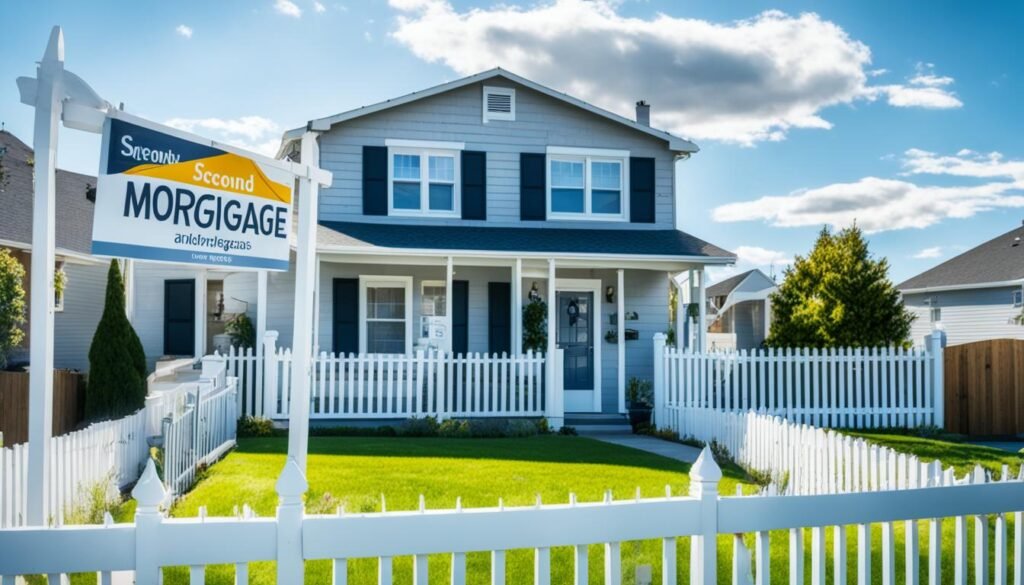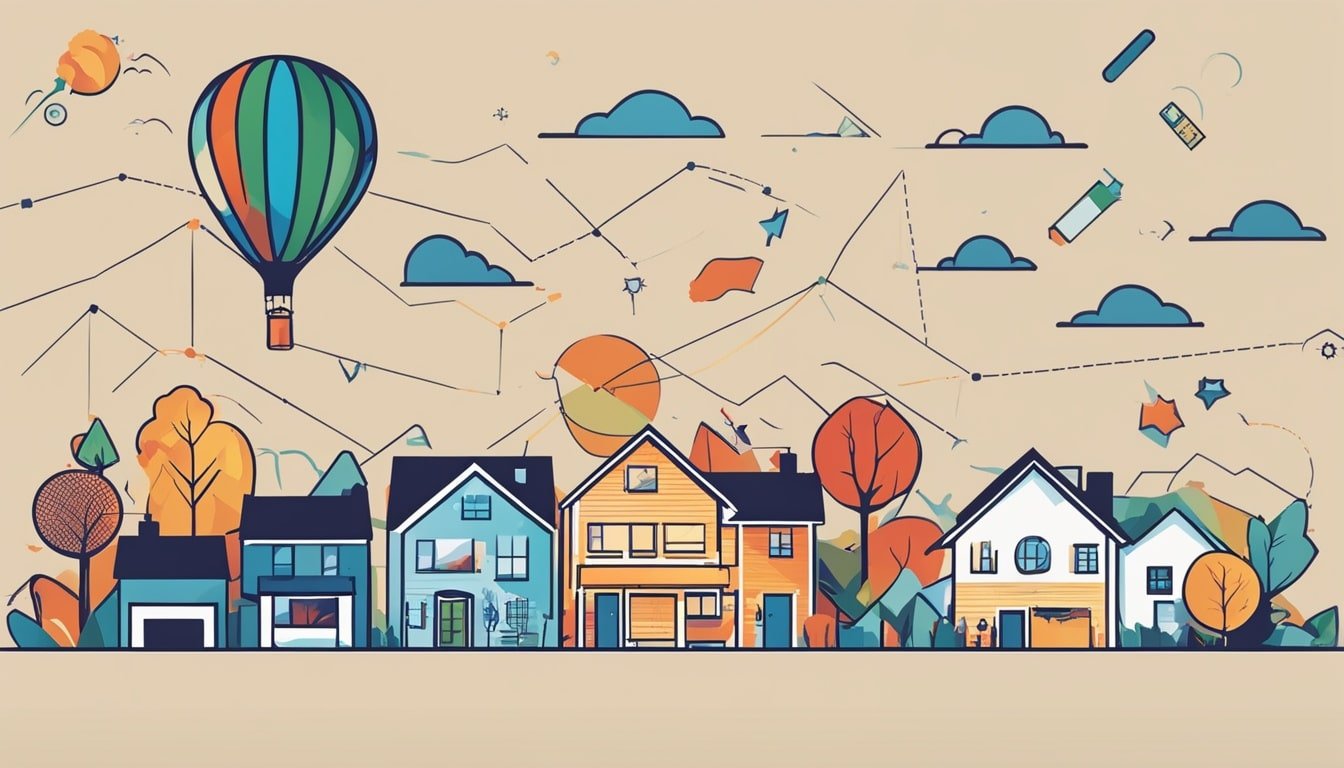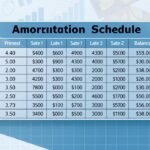Financing a home purchase isn’t a one-size-fits-all affair. The market’s many mortgages each come with unique features. Knowing the types helps buyers pick the right one for their situation.
Key Takeaways
- Mortgages can be categorized into conventional, government-backed, and specialized loan types
- Conventional loans include conforming and non-conforming options, while government-backed loans include FHA, VA, and USDA loans
- Fixed-rate and adjustable-rate mortgages offer different levels of interest rate stability
- Jumbo loans, second mortgages, and reverse mortgages cater to specific financial needs
- The right mortgage depends on credit, finances, and long-term housing plans
Types Of Mortgages
There are several types of mortgages for buying a home. Each type has its own features. Prospective buyers should look at these to make the best choice for their money and future. Some main mortgage types are conventional, jumbo, and government-backed loans like FHA, VA, and USDA. You can also consider fixed-rate or adjustable-rate mortgages.
Conventional loans are the most usual mortgage type. They need a 20% down payment of the home’s price. Jumbo loans, though, are for expensive homes beyond normal loan limits. Government-backed loans might be easier to get, needing lower credit scores and down payments. This makes them good for more people.
In a fixed-rate mortgage, your interest rate stays the same over the loan. This means monthly payments are stable and predictable. But with adjustable-rate mortgages, interest rates go up and down. They might start lower but then change, so your payments can vary a lot.
- Conventional loans: Traditional mortgages needing a 20% down payment
- Jumbo loans: For high-price homes not covered by typical loans
- Government-backed loans: Like FHA, VA, and USDA, with easier credit and down payment rules
- Fixed-rate mortgages: Your interest rate is steady for the whole loan
- Adjustable-rate mortgages (ARMs): Interest rates change with the market
It’s important to know about the different mortgages to pick the right one for you. Consider your financial plans and how long you’ll keep the home. This helps you choose wisely.
Conventional Loans

Conventional loans are the go-to choice for many looking for mortgages. They split into two main types: conforming and non-conforming loans. By understanding the differences, borrowers can pick what’s right for them.
Conforming Loans
Conforming loans stick to the Federal Housing Finance Agency’s (FHFA) rules. The FHFA sets a limit on how much these loans can be. This limit is usually lower than for non-conforming loans. To get a conforming loan, a person needs a credit score of 620 or more. They also need a smaller debt compared to their income.
Non-Conforming Loans
Non-conforming loans are the ones that break the FHFA’s rules. The famous type is a jumbo loan, which is larger than what the FHFA allows. Those who choose these can often have a higher credit score but a lower debt-to-income ratio. This can make it easier for some people to qualify for them.
Both conforming and non-conforming loans work for different types of homes and properties. Knowing the options helps people choose what works for their financial plans.
| Feature | Conforming Loans | Non-Conforming Loans |
|---|---|---|
| Loan Limits | Adhere to FHFA limits | Exceed FHFA limits (e.g., jumbo loans) |
| Credit Score | Minimum 620 | Generally higher than 620 |
| Debt-to-Income Ratio | Lower | Generally lower |
| Lender Availability | Available from most lenders | Limited lender availability |
| Property Type | Primary residence, second/vacation home, investment property | Primary residence, second/vacation home, investment property |
Fixed-Rate Mortgages

Fixed-rate mortgages are a dependable choice for those who value certainty. They keep your monthly payment steady, regardless of market changes. This is great for folks wanting to know what to expect each month.
Fixed-rate loans let you plan your budget without worries. You know exactly how much you’ll pay each month. This certainty helps you keep your finances in order and avoid surprises.
With fixed-rate mortgages, you can choose from 15 or 30-year terms. Some lenders offer other options too. The steady rates make these loans popular, especially for those wanting to avoid rate hikes seen with adjustable mortgages.
“A fixed-rate mortgage provides the peace of mind that your interest rate and monthly payment will remain the same throughout the life of the loan, making it easier to budget and plan for the future.”
No matter if you’re buying your first home or another one, consider a fixed-rate mortgage. It offers financial stability and keeps your housing costs predictable. This helps with managing your money over the years.
Adjustable-Rate Mortgages (ARMs)

Adjustable-rate mortgages (ARMs) differ from fixed-rate loans by having their interest rates change. Initially, an ARM gives a low, fixed rate for 5, 7, or 10 years. Then, the rate can go up or down regularly. ARMs have limits on how high the rate can get, both yearly and over the loan’s life.
ARM Features
ARMs stand out from fixed-rate loans in a few ways:
- At the start, the rate stays the same for 5, 7, or 10 years.
- After this period, the rate can change every year or six months.
- ARMs are connected to a financial index. This index decides how the rate changes.
- A fixed percentage is added to the index to get the new interest rate.
- There are limits on how much the rate can rise, both each year and over the loan’s life.
Advantages and Disadvantages of ARMs
If you won’t be in your home long, ARMs with their low initial rates could save you money at first. But remember, they have some downsides:
| Advantages | Disadvantages |
|---|---|
| Lower initial interest rates compared to fixed-rate mortgages | Interest rates and monthly payments can increase significantly after the introductory period |
| Potential for lower monthly payments during the introductory period | Unpredictable future interest rates can make budgeting difficult |
| Flexibility to move or refinance before the introductory period ends | Possibility of reaching the maximum interest rate cap, which can result in higher monthly payments |
Your decision on an adjustable-rate mortgage (ARM) should consider your financial plans. Also, think about how long you’ll be in the home and if you’re okay with interest rates changing.
Government-Backed Loans

The U.S. government helps more people own homes by backing loans. It supports FHA, VA, and USDA loans. These loans need less cash and have simpler rules than regular loans. This helps people get a home loan who might not have been able to.
FHA Loans
FHA loans help first-time buyers and those with low income. You can start with a low 3.5% down payment. Getting approved is easier with their credit rules. But, you’ll pay more because of mortgage insurance.
VA Loans
VA loans are for military service members, veterans, and their spouses. A big plus is you can buy a home without a down payment. The VA also offers good interest rates. But you might pay a funding fee and no mortgage insurance is needed.
USDA Loans
USDA loans target rural and suburban homeowners. They let you buy with no down payment. Plus, you need a smaller income to qualify. There’s a guarantee fee, but it costs less than most mortgage insurances.
Taking out a government loan has its perks but also extra costs like mortgage insurance and fees. Know all the loan types before picking one to match your budget.
| Loan Type | Down Payment | Credit Score | Additional Costs |
|---|---|---|---|
| FHA Loans | As low as 3.5% | Minimum 580 | Mortgage insurance premiums |
| VA Loans | 0% | No minimum | Funding fee |
| USDA Loans | 0% | No minimum | Guarantee fee |
Jumbo Loans

Jumbo mortgages are for high-cost markets. They are also called non-conforming loans. They finance homes that go over the FHFA’s set limits.
In 2023, the limit is $726,200, or $1,089,300 in pricier areas. Jumbo loans help buyers get more money for their dream homes in expensive markets.
To get a jumbo mortgage, you need a strong credit score, usually 700 or more. You also need to make a bigger down payment. That can be 10% to 20% of the home’s price. Lenders look at your debt and assets closely to make sure you can manage the loan.
Even with tough rules, jumbo loans help skilled buyers buy expensive homes. These loans offer the help and financial backing needed to achieve big real estate goals.
“Jumbo loans are a lifeline for homebuyers in high-cost markets who need larger loan amounts but have the financial profile to handle the stricter requirements.”
Knowing about jumbo mortgages is important for all home buyers. This knowledge can help you find your dream home. Even in tough, competitive markets, this special financing can be your solution.
Second Mortgages

Homeowners have many financing options beyond the regular mortgage. There are second mortgages, allowing you to use your home’s equity. This can help for debt consolidation or home upgrades.
Home Equity Loans
A home equity loan is a type of second mortgage offering a fixed rate and repayment schedule. It’s good for when you need a set amount, like for a renovation or to pay off debts.
Home Equity Lines of Credit (HELOCs)
A home equity line of credit (HELOC) offers flexible funds. It works like a credit card, with a variable rate. It’s handy for ongoing or surprise costs.
These loans, both home equity loans and HELOCs, use your home as a guarantee. They’re helpful for many, but you must look at the terms and risks. Choose carefully to meet your financial needs.
“Accessing the equity in your home can be a smart financial move, but it’s crucial to weigh the pros and cons carefully before taking out a second mortgage.”
High-Balance Loans

High-balance loans are special in the mortgage world, ideal for borrowers in expensive areas. They are just like regular loans but for more money. Home prices in these areas can be much higher than the standard limit.
In 2023, the high-balance loan limit for a single-family home is $1,089,300. This amount is higher than normal, allowing borrowers in costly areas to get bigger loans. They can use this money to buy their dream home or refinance an existing one.
Although high-balance loans are a type of conventional loans, they do have their differences. The main difference is the loan amount. Conventional loans have a smaller limit. High-balance loans let borrowers finance more expensive properties.
In areas where homes are very expensive, high-balance loans are key. Without them, some borrowers might not afford their desired homes. These loans offer a way to get the extra money needed when looking at pricier properties.
It doesn’t matter if you’re buying your first house or adding to your investment portfolio. Knowing about high-balance loans is important. They offer a way to go beyond normal loan limits and meet your buying or refinancing goals.
Reverse Mortgages

As retirement nears, some homeowners might need extra money. They could use it for more income or sudden costs. One choice to think about is a reverse mortgage. It’s a special loan for people 62 and older. They can get money from their home’s equity without monthly payments.
Homeowners get payments from the lender in a reverse mortgage. They don’t have to pay back this money until later, such as when they move or after they’ve died. This can help retirees pay for home fixes, medical bills, or increase their retirement funds.
How Reverse Mortgages Work
Getting a reverse mortgage includes these main steps:
- A homeowner must be 62 or older with a lot of equity in their home.
- The home is appraised. The lender then decides the maximum loan amount based on the home’s value, the owner’s age, and other things.
- The owner picks how they want the loan money: as a lump sum, a credit line, or monthly payments.
- When the home is no longer their primary residence or they pass away, the loan must be paid back. This includes the principal, interest, and any fees.
Benefits of Reverse Mortgages
Reverse mortgages have several benefits for retirees:
- Retirement Financing: They provide an extra income source, helping cover costs and maintain a preferred way of life in retirement.
- Home Equity Access: Owners can use their home’s equity with no need for regular payments. This is helpful for those with little savings or on fixed incomes.
- Flexibility: There are different ways to get the loan money. Owners can choose what works best for them financially.
Yet, before deciding on a reverse mortgage, remember there are downsides too. This includes high fees and effects on estate planning. Speaking with a financial advisor may clarify if it’s a good move for your retirement finances.
“Reverse mortgages can be a valuable financial tool for retirees, but they require careful consideration and planning to ensure they align with one’s long-term goals and priorities.”
Also Read : How to Choose the Right Mortgage Broker: Insider Tips
Conclusion
Understanding the different home loan choices might be overwhelming. But, it’s vital for being informed before you make a decision. Various mortgages exist, from classic ones to ones backed by the government. There are also adjustable-rate mortgages and jumbo loans. Each helps different kinds of buyers based on their financial needs and future plans.
When you’re looking at home loan options and mortgage types, it can get easier. This way, picking the best mortgage for buying a home becomes a smarter choice. It lets you align what you can afford with your dream of owning a home.
No matter if you’re just starting or you’ve been here before, doing your homework is key. Knowing about the mortgage types can really help you find the right financing. Talk to a lender who knows their stuff. They’ll guide you through so you can confidently pick the best mortgage. This sets you up for a successful journey to owning a home.
FAQs
What are the main types of mortgages available?
There are several types of mortgages. These include conventional loans, Jumbo loans, and more. Each serves a different purpose.
What is a conventional loan?
Conventional loans are quite common. They can be conforming or non-conforming. The first follows federal guidelines, and the latter does not.
What is the difference between a fixed-rate mortgage and an adjustable-rate mortgage (ARM)?
Fixed-rate mortgages keep the interest rate the same. Adjustable-rate mortgages start with a fixed rate, then adjust. This could be yearly.
What are government-backed mortgages?
These include FHA, VA, and USDA loans. They are backed by the government. This helps those with less or down payments get a loan.
What is a jumbo loan?
Jumbo loans are for big homes, above typical limits. They require more from the borrower. This includes a higher credit score and a big down payment.
What are second mortgages?
Second mortgages let you use your home’s equity. Home equity loans give a big sum with a fixed rate. HELOCs are lines of credit with changing rates.
What is a high-balance loan?
A high-balance loan lets you borrow more in expensive areas. It’s like a conventional loan but for costlier homes. It increases the limit where houses are pricier.
What is a reverse mortgage?
Reverse mortgages let seniors unlock home equity without monthly payments. The loan becomes due later, allowing them to receive payments.
Source Links
- https://www.bankrate.com/mortgages/types-of-mortgages/
- https://www.rocketmortgage.com/learn/types-of-mortgages
- https://www.lendingtree.com/home/mortgage/types-of-mortgage-loans/






